Posted: September 1st, 2014 | Author: jimmurray | Filed under: Energy Conservation, environmental challenges, Green Home, Green Initiatives, Green Technology | Tags: air conditioning, Flexible Duct, programmable thermostat, Roofing Materials, Thermostat | No Comments »
This is another in our series of guests posts…this one comes from Audrey Clark and will give you some insights into how to make air conditioning your home and or workplace more environmentally friendly. Please note, we have an open door policy for blogs. If you are interested in posting on our site, email me at jim.murray@ourgreendirectory.com and I will send you the submission criteria.
Here’s Audrey’s post…hope you enjoy it.
High-efficiency is the name of the game in green living, especially when you’re talking air conditioning. Today’s cooling systems are worlds above those old, cantankerous window units of old. Using new, exciting and innovative technology, manufacturers are taking the art of home cooling to the next level.
Remote Programmable Thermostats
If you forgot to turn the air back before you left for the day or the weekend, never fear. A remote, programmable thermostat allows you to complete the task from the convenience of your mobile device. A device like this can save you up to 15 percent on your annual home utility bill, according to the U.S. Energy Department. You can also program your thermostat to automatically cut back on energy usage during certain hours of the day or night.
EverClean Flexible Duct
Higher-quality ductwork translates into better energy efficiency, and according to information provided by Home Depot, the EverClean brand of flexible duct ranks near the top of the list. EverClean duct features the following advantages over plain old ductwork:
- A layer of insulation between the core and the outer shield–making this ductwork more immune to the growth of mold and mildew
- Fiberglass composition–making for quieter and more fire-retardant operation
- The use of low VOC (volatile organic compound) materials
- Energy-Star certification
Homeowner Contribution
It’s not a new invention, but more emphasis is now falling upon the homeowner when it comes to operating in the green. Speaking with your HVAC installer about upkeep and maintenance of your home cooling system can help save money, and helps you to keep your ventilation system working efficiently, according to Refrigeration School, Inc.
- Planting shade trees and shrubs around your home and outdoor air conditioning unit helps keep temperatures at bay, making it easier to keep the air inside your home cooler.
- Keeping windows and blinds these drawn on the hottest days of the year.
- Keep ceiling fans circulating to help move cool air around your rooms.
- Keep lamps away from your thermostat. These can fool your cooling system into thinking your home is warmer than it actually is.
- Using cool roof materials or coatings, as well as white blinds or backing behind your curtains helps to reflect heat back outside your home. So do solar shades at the windows.
- Installed correctly in your attic space, radiant barriers help keep the heat from your roof from transferring into your attic.
Author Bio:
Audrey Clark is a skilled freelance blogger covering a range of topics from careers and finance to travel and leisure, along with everything in-between. When not writing, she’s always on the lookout for her next adventure. Connect with Audrey on Twitter and Google+.
Posted: April 14th, 2014 | Author: jimmurray | Filed under: Green Businesses, Green Initiatives | Tags: Eco Friendly, green, Green Movement, Markham, Toshiba Canada | No Comments »
Here’s a little news story about a big company doing green things. Toshiba Canada is one of the more progressive outposts in the vast Toshiba empire when it comes to green initiatives. We encourage you to check out this link…who knows, maybe you’ll get some ideas that will help you green your workplace too.
http://www.yorkregion.com/news-story/4459820-markham-company-puts-focus-on-being-green/
Posted: November 18th, 2013 | Author: jimmurray | Filed under: Aquaponics, Green Businesses, Green Initiatives, Green Technology, Our Green Directory | Tags: aquaponics, eco system, nitrates, plants | No Comments »
This is a guest post from blogger, bAmanda Kostina.
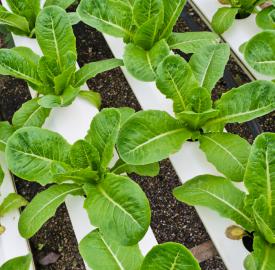 Aquaponics is the combination of aquaculture and hydroponics. The former concerns the raising of aquatic animals, while the later deals with growing plants or vegetables in water. By combining the two, aquaponics creates a mutually beneficial system where water and nutrients are recycled naturally. By feeding the waste water from an aquaculture system into a hydroponics system, essential nitrates and nitrites are created in a natural way. This leaves a clean, healthy environment for the fish, while providing nutrients for the plants. In this list, you will find ten more excellent reasons why you should consider a aquaponics system.
Aquaponics is the combination of aquaculture and hydroponics. The former concerns the raising of aquatic animals, while the later deals with growing plants or vegetables in water. By combining the two, aquaponics creates a mutually beneficial system where water and nutrients are recycled naturally. By feeding the waste water from an aquaculture system into a hydroponics system, essential nitrates and nitrites are created in a natural way. This leaves a clean, healthy environment for the fish, while providing nutrients for the plants. In this list, you will find ten more excellent reasons why you should consider a aquaponics system.
- Weeding – With aquaponics, it’s simply not an issue. The systems don’t use soil or any processes that enable weeds. Without weeds, you can concentrate on growing vegetables and watching your fish grow. That means that you can say goodbye to that lower back-pain from constantly having to bend down to pull out weeds.
- Reduced Space – In aquaponics systems, plants and vegetables are constantly fed through water and nutrients. This means that the footprint needed is significantly less than with traditional crop farming. As long as each plant is getting enough light, you can effectively grow plants in much closer quarters.
- Artificial fertilizer – Forget about ever having to buy artificial fertilizer once you set up an aquaponic system. The only additional food that your plants will need is supplements to balance nutritional intake. However, not all systems will require an additional supplement, which means 100% savings on fertilizers. Most important of all is the fact that you can’t actual add fertilizer to the system, as it will kill any fish you have in the tank.
- Faster Plant Growth – With a constant feed of essential nitrates, plants grow much faster in aquaponics systems. The level of output is also affected by the reduction in space, allowing the system to produce higher yields than traditional soil planting. Also, aquaponics systems are improving all the time, which can only mean that even faster plant growth will be possible in the future.
- Water Reduction – All water in aquaponics systems is recycled. This means that your overall water usage will greatly reduced, which is good for both the environment and your pocket. There is little to no labor involved in the process, either. Apart from occasional top-ups and cleaning pumps and filters, you won’t have to lift a finger to maintain optimum water levels.
- Organic Systems – Provided that you give your fish stock only organic feed, an aquaponics system is completely eco-friendly. You will benefit from only the most natural crops and plants, while your fish are fed on healthy organic products, too. This is a win-win for humans, plants and fish. You can’t always guarantee that store bought vegetables are organic, but you can with your own aquaponics system.
- Sustainability – As your aquaponics system is effectively a self-sustaining ecosystem, you don’t have to worry about eroding resources. Once you determine the best level of production, you can maintain growth and output at a constant level. Soil systems, on the other hand, drain their ecosystem of resources, requiring you to constantly re-balance nutrients and the soil’s health.
- No Pesticides – With soil, you have to use pesticides to prevent plants from becoming damaged or destroyed. As aquaponics does not use soil, related pests are automatically out of the picture. What’s more, your plants won’t be absorbing any toxins from pesticides, making for a much healthier crop.
- Dollar Output – If you sell your crops, the increased yields from aquaponics will also increase your bottom line. With the huge demand for organic produce, you will find that your customer base will grow, too. Don’t forget that you also have fish stock, which means aquaponics potentially provides a dual revenue stream.
- Labor Reduction – Less labor for you, less use of energy, and less time spent working in your garden in general. After you install your aquaponics system, you will notice a significant drop in the amount of time you spend slaving over gardening related tasks. This gives you more time to enjoy your garden, while still being able to reap all the rewards.
So there you have it – ten ways that you can benefit from owning an aquaponics system. Reduced labor, higher yields, healthier animals and plants, and more money in your pocket. With so many positives, you really have nothing to lose. Plus, with an aquaponics system, you always have the best of two worlds.
Resources:
http://en.wikipedia.org/wiki/Aquaponics
http://www.backyardaquaponics.com
More good green articles can be founds at http://savings.whitefence.com
Posted: October 6th, 2013 | Author: jimmurray | Filed under: environmental challenges, Green Initiatives, Green Jobs, Green News Links, Green Recycling, Green Services, Green Technology, Our Green Directory | Tags: environmental challenges, global, Placticbank.org, plastic recycling, plastic repurposing | No Comments »
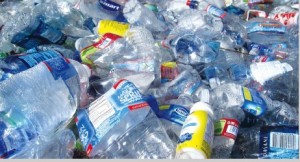 We were very pleased to discover this organization called the Plastic Bank.
We were very pleased to discover this organization called the Plastic Bank.
It’s predicated on the idea that waste plastic, which is one of the world’s most daunting environmental challenges, possesses what they believe to be an “abundance of opportunity”.
Their site, www.plasticbank.org, lays out the argument in very lucid terms and you come away feeling that you are looking at a very well meaning and more importantly, well structured organization.
 We don’t have to tell you just how much plastic wastes is created in the world every single day. But it’s easily in the millions of tons. It’s something that concerns everyone and should. But the vision of this group is to create plastic exchanges all over the world and be able to sort and funnel this waste plastic to wherever it can be most easily re-purposed.
We don’t have to tell you just how much plastic wastes is created in the world every single day. But it’s easily in the millions of tons. It’s something that concerns everyone and should. But the vision of this group is to create plastic exchanges all over the world and be able to sort and funnel this waste plastic to wherever it can be most easily re-purposed.
This is an admirable mission. And probably something that would be of great interest to a number of different types of recycling organizations.
The world is changing and it’s big ideas like this that helping that change be a change for the better.
Posted: September 15th, 2013 | Author: jimmurray | Filed under: Green Communities, Green Initiatives, Green News Links, Our Green Directory | Tags: 10 block diet, eco farming, eco garden, Fund Raiser, green initiative, Kathleen Wynne, My Food My Way, Skyline Farms, TDSB, Vertical Aeroponic Tower Garden Urban Farm | No Comments »
Jacqueline Spicer of The Ink Tank® in Toronto is a good friend. Her son Jake and his business partner have recently launched a new ‘green’ project called Skyline Farms. Like any new project, Skyline Farms was started on a shoestring, but it’s a great idea that deserves support.
Skyline Farms is an environmentally and socially innovative urban farm model that is taking off like gangbusters, with lots of media and political attention–including Premier Kathleen Wynne. They are holding a launch event to celebrate the success of the pilot farm and to raise funds to grow Skyline Farms.
Skyline Farms Release:
Skyline Farms is proud to partner with the Toronto District School Board (TDSB), Toronto Education Workers (TEW) and Launch 180 in supporting Canada’s First Vertical Aeroponic Tower Garden Urban Farm and its growth to nourish schools and communities across the GTA.
On Thursday, October 10, 2013, we are celebrating the success of Skyline Farms’ successful pilot farm and a revolution in food culture that is changing the way youth connect to their food and their community.
The goal of the event is to raise funds to enable the pilot farm to achieve its full capacity: a full greenhouse with 30 Towers that will nourish not only the home school, but also other schools, restaurants and residents in the community. The year-round farms will serve as a state-of-the-art experiential learning facility for high school students aged 13-18, inspiring healthy food choices, introducing new sustainable technologies and preparing them for jobs in this growing sector. The larger goal is to establish Skyline Farms’ unique urban agriculture model at schools across the GTA.
I am writing you to help us grow this socially and sustainably innovative young company and our joint initiative to truly make a difference. Please support us by making either a monetary and/or product donation for our silent auction or to help us manage the event and make this a reality for our schools and communities. All monetary donations will go to the Toronto Foundation for Student Success (TFSS) for the Skyline Farms initiative and will receive a charitable receipt.
The pilot farm launched this spring at Thistletown Collegiate Institute (TCI) under an umbrella program called My Food My Way (MFMY), with a mandate to positively change the food culture in Toronto high schools, homes and communities through healthy food choices within educational institutions. Skyline Farms provides the culinary program at TCI with fresh, hyper-local, high nutrient natural produce and mentors students with hands-on experience on the farm.
Skyline Farms is a Toronto-based urban agriculture company that is “redefining locally grown”. Founded by two young entrepreneurs, graduates of Humber College’s Sustainable Energy and Green Building Program, it is committed to addresses the bigger sustainability picture: environmental, health, community and economic by changing our connections to food and to each other.
Join Skyline Farms, our partners, MFMY ambassadors, sustainability advocates, chefs, farmers, industry professionals, politicians, sponsors, student interns, locavores and supporters at The Great Hall. And please join me in supporting this unique initiative in whatever way you can. Help grow the 10 block diet and grow with us.

Posted: July 2nd, 2013 | Author: jimmurray | Filed under: Green Communities, Green Initiatives, Green Kids | Tags: Eco Friendly, low carbon footprint, Renewable Energies, solar cell technology, Sustainability, Wind turbines | No Comments »
This is a guest post by Liz Nelson from WhiteFence.com. She is a freelance writer and blogger from Houston. Questions and comments can be sent to: liznelson17 @ gmail.com.
While building your own solar array to provide enough power to your home to be 100-percent sustainable could cost tens of thousands of dollars, you don’t need a lot of money to teach children how it works and why it’s important. In fact, there are a lot of kits on the market that can serve semi-practical uses while demonstrating to the kids the mechanics of it all. Most of these kits cost less than $150 and can provide a wealth of knowledge for green sustainability.
1. Solar Arrays – The solar panel kit offered by HarborFreight.com produces 45 watts of power while providing the capabilities to power small 12-volt devices. It also supports the use of 5 volt USB devices such as phone charges and other USB electronics normally purchased for computers. This kit can be expanded on by combing more panels together while using a deep cycle battery and an inverter – both are sold separately. This is a fun and quick project for your children to assemble and can be utilized in many ways for practicality such as camping or tied into your home power needs. The kit itself is less than $250.
2. Wind Turbines – For less than $130, you could demonstrate to your children the power of wind turbines from KidWind.com. These wind turbines can be purchased as small single units to elaborate classroom kits, each turbine producing as much as two watts of power. These kits are tailored specifically for children and include easy to follow instructions in order to assemble them. Although they may not have the maximum production value of power as the solar kit listed above, they can easily be used to demonstrate how humans can harness natural sources of energy without consuming fuels to do so.
3. Small Solar Panels – For those who don’t want to spend a great deal of money teaching their children about solar power, LegacyStation.com offers an inexpensive kit to power several different projects. This 6-in-1 kit is under $20 and can demonstrate how to use solar power in order to create vehicles or propulsion systems in aircraft. These are easy to assemble and will provide a great deal of entertainment without the use of a single battery. Of course, there is nothing wrong with modification of any project should you want to demonstrate how solar arrays can power an object while charging a battery in order for the object to continue functionality when solar power is low. This would only require the use of a battery pack and rechargeable batteries that can be picked up from Radio Shack for less than $20.
4. Pressurized Power – While solar and wind are two of the most popular and practical methods for renewable energy sources, NationalGeographic.com has made an air and water power kit to teach children about how pressure can be used to power a variety of machines including vehicles. The kit allows children to build 15 different vehicles all powered by hydro-pneumo technologies. Pressurized air and water can be used as a form of propulsion, and the kit costs less than $50.
Getting your children excited about renewable energies now increases the knowledge they will have later. As technology develops to make these sources more efficient, preparing our future through educating our young will only increase the likelihood of total global sustainability in the decades to come. Your child may very well be the innovator that history remembers for delivering the perfected system – all from the kits they put together at 10 years old.
EDITOR’S NOTE: We are always receptive to having people create guest blogs for us, as the influx of opinions always makes for interesting reading.
Posted: February 16th, 2013 | Author: jimmurray | Filed under: Green Communities, Green Home, Green Initiatives, Green Technology | Tags: architecture, earth bag, eco-architecture, innovation, low carbon footprint, organic, Soma Earth, straw bale, straw clay, sustainable | No Comments »
One of the green organizations from whom we receive email promotions is called Soma Earth. We really like these guys because they seem to possess a purity of spirit and purpose that really exemplifies what the green movement is really all about.
This is how they describe themselves:
“We are a pioneering architectural firm specializing in deep sustainable living through designing buildings that are energy efficient, with a low carbon footprint and low embodied energy. We specialize in healthy, EMF-Free, non-toxic natural building environments as well as straw bale, straw clay and earth bag building systems. These guidelines paired with natural building materials creates a sustainable eco-architecture for new buildings, additions or renovation projects.”
Their portfolio, which you can view on their site, is filled with fascinating projects that are as innovate in their design as they are organic in their execution.
You can find out more about them at http://www.somaearth.com/
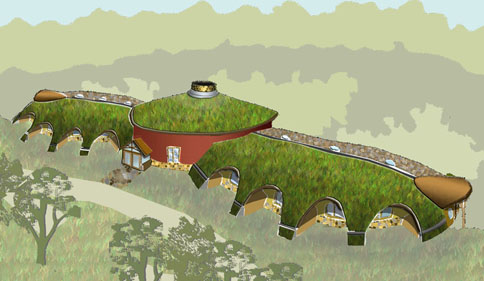
Posted: February 5th, 2013 | Author: jimmurray | Filed under: Green Initiatives, Green Products, Green Technology | Tags: Nano Technology, Nanolight, Toronto | No Comments »
Three University of Toronto grads have invented a new light bulb that they call the NanoLight. The attached link to the Toronto Star article, by business reporter Curtis Rush explains how it works and what makes it such a great innovation. But it makes us proud here at OGD that local people are coming up with big green ideas. I hope it’s a huge success because nano technology is one of the new frontiers out there and the more positive attention that gets focused on it, the more innovations will flow.Check out the article and check back with this blog for news on other great great innovations.
http://www.thestar.com/business/2013/02/01/toronto_grads_invent_worlds_most_energyefficient_light_bulb.html
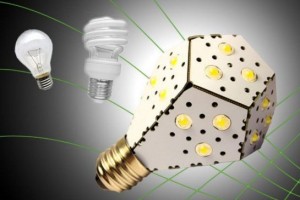
Posted: January 6th, 2013 | Author: jimmurray | Filed under: Green Initiatives | Tags: Eco Friendly, Heinz Canada, Ketchup, Plant Bottle, Plant-based Material., Recyclable, Sustainability | No Comments »
Because of its icon value, the ubiquitous Heinz Ketchup bottle is hardly thought of any sort of ecological marvel. In fact, you might tend to think of the millions of plastic ketchup bottle scattered around the known universe in pantries, grocery stores, restaurant and condiment tables as pretty much part of the problem.
You Can Judge This Book By Its Cover
I was jonesing for some ribs on New Years eve so off we went to the only place I was sure we could get a table, good old Swiss Chalet. While we were waiting for our festive feast the Heinz ketchup bottle on the table caught my eye. With the intriguing headline: “Guess What My Bottle Is Made Of and a superfluous ‘?’ (because it wasn’t actually a question), I read on nonetheless and discovered that this bottle and zillions others like it, is made from up to 30% renewable resources. Now this may not strike you as a big deal until you do the math and realize that the Heinz company is making a very substantial sustainability statement here.

Plant Bottle? I Don’t Know…Maybe.
You might take a bit of exception to them calling this bottle a ‘Plant Bottle’, but its clear that their collective hearts are in the right place going forward. So kudos, (with a small ‘k’) to the Heinz Company, for giving it a good shot. Let’s hope they keep moving in this direction and that this initiative sets and example that other packaged goods producers will follow
More info on the Heinz ‘Plant Bottle’ is available here:
http://www.heinz.com/CSR2011/environment/packaging_materials.aspx
Posted: March 25th, 2012 | Author: jimmurray | Filed under: Green Initiatives, Green Technology | Tags: architecture, ECOArk, modern, plastic, recycling, Taiwan, technology | No Comments »
TAIWAN’S ECO ARC MAKES A STUNNING STATEMENT ABOUT RECYCLING IN TODAY’S WORLD.

Arthur Huang. Young, smart, and committed to building a better world.
While we tend to think of the Chinese culture as something very old and traditional, the young Chinese architects of Taiwan are anything but. Recently one of these young architects, Arthur Huang, was profiled on an episode of the Megastructures on the National Geographic Channel. http://en.wikipedia.org/wiki/Arthur_Huang
His idea was to build the world’s lightest eco friendly building, mainly of something called polli-bricks, injection moulded bottles made entirely of recycled plastic drink containers. The commission, for the Far Eastern Group, was to build a completely sustainable and completely deconstructable building that would initially be used as a pavilion for the 2010 Taipei International Expo. The Building would then be taken down and reconstructed in various locations around the world and would serve as a shining example of sustainability and recycling, not to mention Chinese architectural innovation.
Impressive Specs
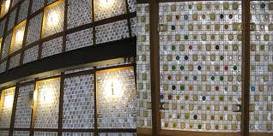
The ECOArks walls, painstakingly assembled from injection moulded recycled drink bottles.
The 130 metre long and 26 metre high building itself is a true architectural wonder. Nicknamed the EcoARK and composed of 1.5 million polli-bricks, bonded together, by a small amount of silicon into 3 metre square panels, the building was engineered to withstand large earthquakes and typhoons. It is also designed to be self -heating and cooling, using the power of both the sun and the wind in innovative ways.
The pavilion includes an amphitheatre, museum space and a screen of falling water collected during rainy periods for air conditioning. The clear plastic containers in the wall allow natural light to flood the cavernous interior.
Douglas Hsu, Chairman of the Far Eastern Group is quoted as saying ,“EcoARK is the world’s lightest, movable, breathable environmental miracle,”
Today’s Technology Builds A Modern Classic
The story of the design and construction of this unique building is an incredible example of how, with today’s technology, recycling can play a major role in building and home construction. And the raw materials available to anyone wishing to build with them are abundantly available from the recyclable plastics, wood and metals that are all around us.
To view a series of videos on EcoARK
http://natgeotv.com/ca/megastructures-eco-ark/videos/construction








